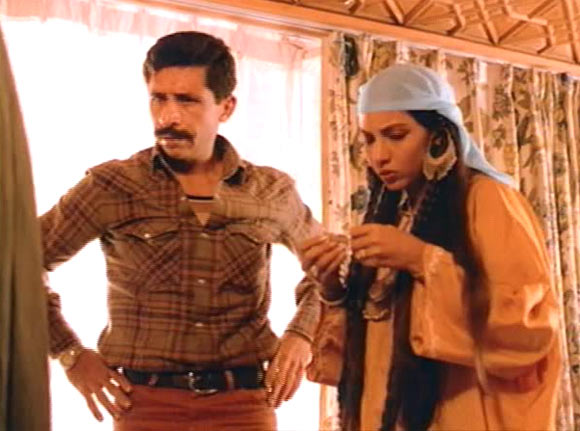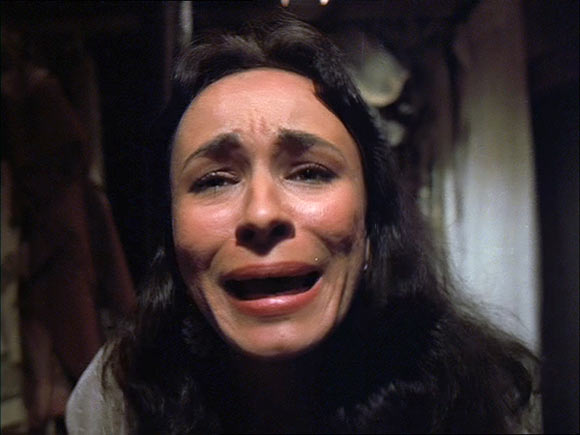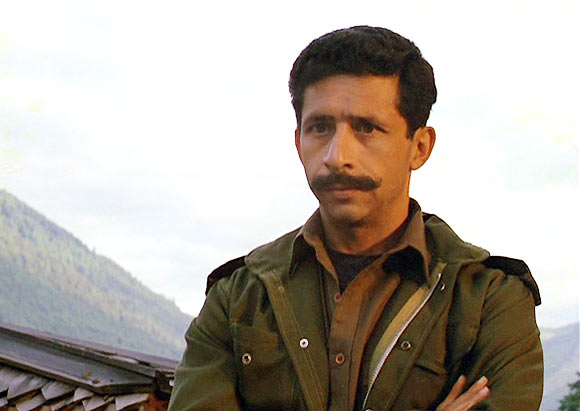Sukanya Verma in Mumbai
A certain enigma builds around films you (desire to but) do not get to see as a kid.
Like I wasn't even born when Jaani Dushman came out. Years later, in the days of cable TV-free existence, my nanny recounted the entire screenplay to me verbatim in the manner of fairy tales.
A fine narrator, her description and revelations left me enraptured, terrified and startled. Without actually seeing the film, I decided it's the scariest film I've ever seen. Of course, when I finally did watch it, I found the whole 'beast man blood thirsty for bride in red' extremely amusing.
Later in 1985, when Mandakini made news for her famous waterfall scene in Ram Teri Ganga Maili Ho Gayi, Amitabh Bachchan doodled 'Mard' on his chest and Sunny Deol made new fans with his commanding presence in and as Arjun, also released Vidhu Vinod Chopra's small-budget whodunit Khamosh featuring some of the best actors we've ever had -- Amol Palekar, Shabana Azmi, Naseeruddin Shah and Pankaj Kapur.
I was much too young to care. But I do remember how my mom who saw it with her colleagues and my brother who sneaked out with his cronies, raved endlessly about the unexpected killer and its unique treatment. That's the part when I feel both -- left out and lucky.
There's no need to explain the former but the latter since I didn't pay any attention to the murderer's identity and avoided all spoilers for more than two decades till I finally saw it.
And my first-reaction is disbelief at just how overlooked this brilliant piece of filmmaking is.
P:S: If you haven't seen it already, be warned, spoilers ahead.
A pungent commentary on the film industry
Image: Shabana Azmi and Amol Palekar in KhamoshIf I cannot change the general perception, I will certainly not contribute to it.
Made at a budget of Rs 8 lakh, Chopra may not have the finance to fashion a lavishly mounted movie-within-movie scenario but he comes up with many ingenious ideas to marginalise production-related limitations.
So you have actors playing themselves -- Amol Palekar is Amol Palekar and Shabana Azmi as (three-time National Award winner who went on to win two more) Shabana Azmi.
And the movie they're filming around the picturesque locations in Kashmir is forebodingly titled Aakhri Khoon.
Lending believability to a parody
Image: Soni Razdan in KhamoshThis is largely how things worked in a decade when bound scripts were unheard of and stars simply showed up and did as the director ordered.
The relevance in Vachani's cold, detached resolution, 'Kal ka din mourning manayenge, parson se shooting chaalu kar dijiye,' subscribing to the show must go on diktat continues to hold true even today.
Clever use of wide-angle shots, colours
Image: A scene from KhamoshTribute to Psycho
Image: Shabana Azmi in KhamoshThat one shot of the iconic shower scene from Hitchcock's classic playing out in a bare hotel room lingers on as much as the moment of big reveal against a soaked window when shock meets fear. Superlative stuff, this.
What is perceived as an open-shut case of suicide finds evidence of murder, a claim that is substantiated with subsequent killings.
But when he conducts his investigations and searches every single hotel room, Chopra cuts back and forth to the room and its inhabitant, examining curious traces of concealed secrets and possible motives.
Instead Vanraj Bhatia's ominous background score, assisted by Dadasaheb Phalke recipient Kersi Lord and composer Uttam Singh (Dil To Pagal Hai, Dushman), is designed to suit the temperament of dread and anticipation.
Standout performances
Image: Naseeruddin Shah in KhamoshKhamosh leaves out the popular excesses but there's nothing scant about its imagination or populated frames.
Considering its cast is a sprawling unit, it's quite a challenge to utilise all of them adequately. To Chopra's credit, he doesn't let anyone go waste.
Shabana Azmi's honed skills and effortless warmth in a role that demands her to scream a whole lot frequently, Naseer Shah's restrained dynamism even when he scarcely opens his mouth, Pankaj Kapur's nervous energy and eerie gaze that marvellously attracts (and distracts) and there's also Soni Razdan in traditional Kashmiri attire reminding you just how much her daughter Alia Bhatt resembles her mother.
Irrespective of the role's length or designation, the key players, the supporting cast, half a dozen props and the all-encompassing Pahalgam Hotel collaborate like a combined team effort to elevate the delicately laid-out deceit. In any tale of intrigue, the climax (or the killer if you please?) is the deal breaker.
Right from the breathtaking chase in the town streets where you learn why the one you thought is the killer is not the killer -- the clever bullets theory -- till the original offender meets his end, Chopra's third act offers a befitting finish and a joyride in nail-biting entertainment.
I haven't forgotten Amol Palekar who simply walks away with Khamosh in the chilling final scene. His icy cool demeanour as he tenderly discloses his intention to bump off his last victim is a far cry from the self-conscious, bumbling office goer roles he's best known for. His motivation to kill may seem a little less sensational in 2013 but the criminal fervour of his manic, enlarged eyes is disconcertingly effective.
At the end, a disclaimer shows up saying All characters in this film are fictitious. Palekar later joked about how the original write-up read, 'Amol Palekar is not a murderer and Shabana Azmi does not sleepwalk.'







Comment
article